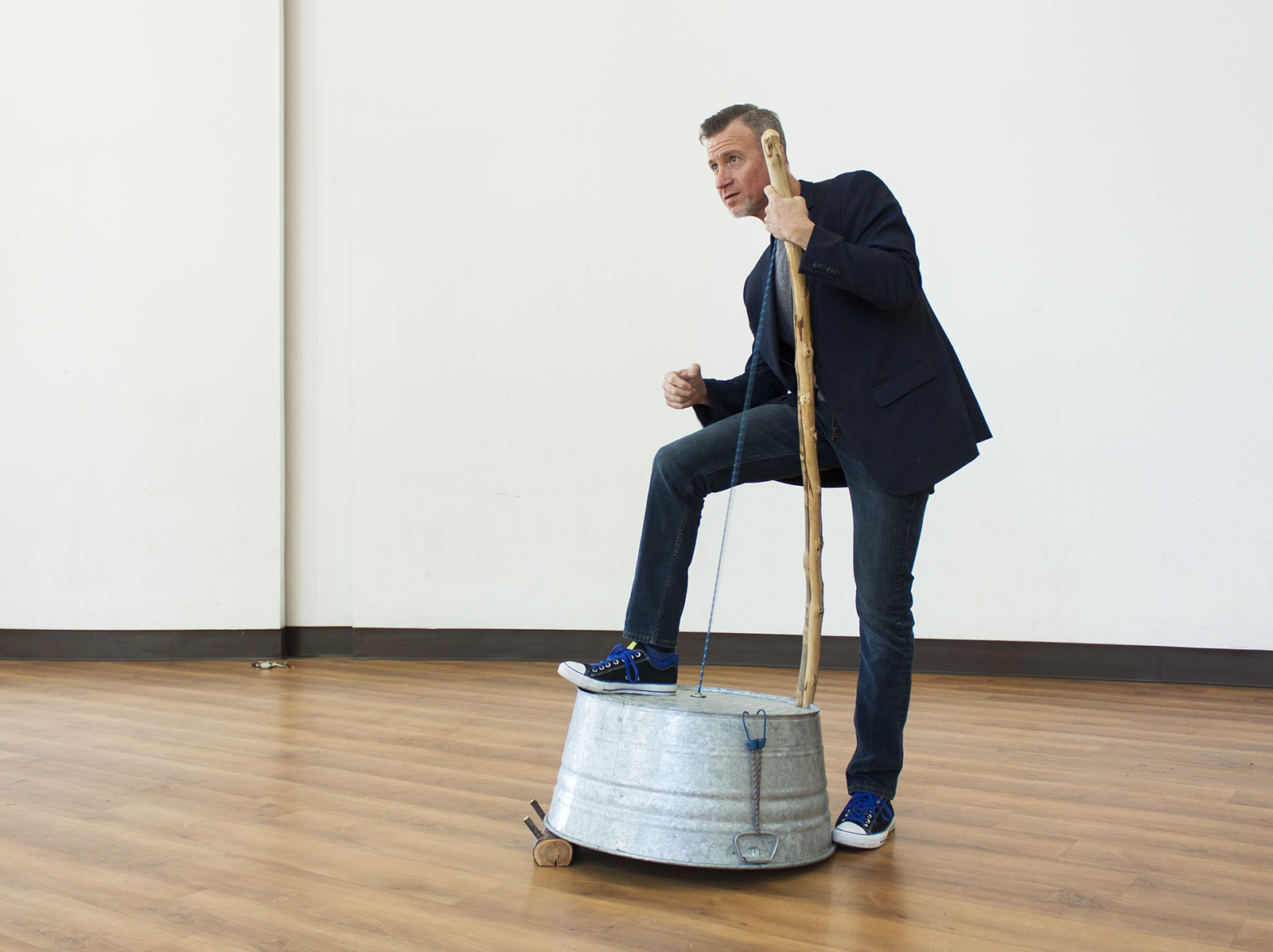Sounds of Schoenberg: The American washtub bass

Ethnomusicology graduate student Marc Bolin plays the American washtub bass, an instrument made of weed-whacker line, a washtub and a wooden pole. The instrument was built by former UCLA graduate student Scott Linford. (Kathy Chen/Daily Bruin)
By Daniel Maraccini
Feb. 19, 2016 12:00 a.m.
Each week, Daily Bruin A&E will explore the instruments of the World Musical Instrument Collection and their performers that all contribute to the musical landscape of the UCLA Herb Alpert School of Music. This week, we highlight the American washtub bass, an instrument made of weed-whacker line, a washtub and a wooden pole.
Marc Bolin holds a wooden stick tied to a blue washtub with a weed-whacker line. When taken together, the materials make up a washtub bass, an instrument Bolin said connects him to the early 20th century days of Midwestern America.
Bolin, an ethnomusicology graduate student, has played the washtub bass as part of the school’s Bluegrass and Old-Time String Ensemble. He said he enjoys playing an instrument made out of materials not intended for instruments.
Bolin said jug band is an ad hoc form of music that originated in Louisville, Kentucky, during the early 1920s. Musicians can use tools and appliances lying around their house, like spoons, saws or washboards, and fashion them into instruments that can be played with friends.
“You buy the parts, unless you have a washtub laying around and some rope,” Bolin said. “I guess you need a drill too.”
When playing in jug bands with his friends, Bolin usually fills the bass section, stabilizing the blue painted tub with his right foot and pulling back the wooden pole that serves as the instrument’s fretboard.
To round out the section, he also plays a jug, blowing air over the opening of a rusty, old paint or gasoline can – he isn’t sure which. He could be accompanied by a singer, a premade guitar or a kazoo made out of a comb and waxed paper.
The washtub bass Bolin plays was made when former UCLA graduate student Scott Linford received a grant from the ethnomusicology department to build it.
With the weed-whacker line stretched tight from pole to tub, Bolin leans his ear close to the instrument. The washtub acts as an amplifier for the sound the string makes, but Bolin said garbage cans and boxes could also be used in its place.
No specific kind of string is required either. As long as Bolin is able to shorten or lengthen the string with his right hand, he can change the instrument’s pitch.
The versatility of jug band is part of what makes the genre accessible, as not everyone can afford to buy a harp or flute.
“If it’s roots music or folk music, then it’s going to be music of the people,” Bolin said.


